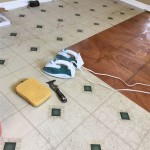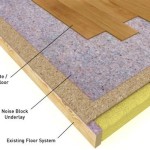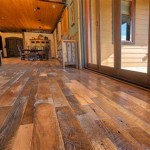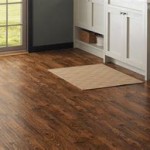What to Use to Remove Paint From Wood Floors
Removing paint from wood floors can be a challenging task, requiring careful consideration of the type of paint, the type of wood, and the desired outcome. Employing the correct method and materials is crucial to avoid damaging the underlying wood and achieving a satisfactory result. This article explores a variety of techniques and products suitable for removing paint from wood floors, offering guidance on selecting the most appropriate option for a given situation.
Understanding the Paint and Wood
Before embarking on the paint removal process, identifying the type of paint is essential. Common types of paint found on wood floors include latex (water-based), oil-based, and alkyd paints. Latex paint is generally easier to remove than oil-based or alkyd paints, as it tends to be more pliable. Knowing the paint type dictates the choice of removal method and the necessary solvents or chemicals.
Similarly, understanding the type of wood floor is equally important. Hardwoods, such as oak, maple, and cherry, are typically more durable and can withstand more aggressive removal methods than softwoods like pine. The presence of a finish (e.g., polyurethane, varnish, wax) also influences the process. Removing paint from unfinished wood requires a different approach compared to removing it from a floor with a protective coating.
It is generally advisable to test any paint removal method in an inconspicuous area first. This allows for the assessment of potential damage or discoloration to the wood and ensures that the chosen method is effective on the specific type of paint and wood combination.
Mechanical Paint Removal Methods
Mechanical methods involve physically removing the paint from the wood surface. These methods are often the most direct but also carry the highest risk of damaging the floor if not performed carefully.
Scraping: Scraping is a common initial step in paint removal. A sharp, beveled-edge scraper is used to lift the paint from the surface. It is crucial to use a scraper with rounded corners to prevent gouging the wood. Apply consistent, gentle pressure, working along the grain of the wood. Scrapers are available in various widths and shapes to accommodate different floor contours and paint thicknesses. For large areas, a floor scraper with a longer handle can provide better leverage and reduce strain.
Sanding: Sanding is another frequently employed method, often used in conjunction with scraping. It involves using abrasive sandpaper to gradually wear away the paint layer. Electric sanders, such as orbital sanders or drum sanders, can be used for larger areas. However, caution is advised, as aggressive sanding can easily remove too much material and damage the wood. Always start with a coarser grit sandpaper (e.g., 60-80 grit) to remove the bulk of the paint and gradually progress to finer grits (e.g., 100-120 grit) to smooth the surface. Dust extraction systems are highly recommended to manage the paint dust generated during sanding, especially if the paint contains lead.
Heat Guns: Heat guns use hot air to soften the paint, making it easier to scrape away. The heat should be applied evenly and methodically to avoid scorching the wood. Hold the heat gun a few inches away from the surface and move it continuously. As the paint softens, use a scraper to gently lift it away. Be mindful of the heat gun's temperature setting, as excessive heat can ignite the paint or damage the wood. Adequate ventilation is crucial when using a heat gun, as it can release fumes from the paint.
Considerations for Mechanical Methods: Mechanical methods are generally effective for removing thick layers of paint or for spot removal. However, they can be time-consuming and require a significant amount of physical effort. They also generate dust and debris, requiring proper cleanup. Furthermore, mechanical methods can be less effective on textured surfaces or in areas with intricate details.
Chemical Paint Removal Methods
Chemical paint strippers utilize solvents or chemicals to dissolve the paint, making it easier to remove. These strippers are available in various formulations, including liquid, gel, and paste forms. The choice of stripper depends on the type of paint, the type of wood, and the desired level of convenience.
Solvent-Based Strippers: Solvent-based strippers contain powerful solvents that dissolve paint quickly and effectively. Common solvents include methylene chloride, N-methylpyrrolidone (NMP), and toluene. However, these strippers can be hazardous and require strict adherence to safety precautions. They should be used in well-ventilated areas, and appropriate personal protective equipment (PPE), such as gloves, respirators, and eye protection, should be worn. Solvent-based strippers can also damage certain types of wood or adhesives, requiring careful testing before application.
Caustic Strippers: Caustic strippers contain alkaline chemicals, such as sodium hydroxide or potassium hydroxide, that break down the paint film. These strippers are effective on multiple layers of paint and can be used on both latex and oil-based paints. However, they are highly corrosive and can cause severe burns. They should be handled with extreme care, and appropriate PPE is essential. Caustic strippers can also darken certain types of wood, particularly oak, requiring neutralization after use.
Bio-Based Strippers: Bio-based strippers are formulated with plant-derived solvents, such as citrus oils or soy-based esters. These strippers are generally considered safer and more environmentally friendly than solvent-based or caustic strippers. However, they may be less effective on tougher paints and may require longer dwell times. Bio-based strippers are often a good option for smaller projects or for individuals concerned about chemical exposure.
Application and Removal of Chemical Strippers: Chemical strippers are typically applied liberally to the paint surface using a brush or roller. The stripper is then allowed to dwell for the recommended time, allowing it to penetrate and soften the paint. After the dwell time, the softened paint is scraped away using a scraper or putty knife. Multiple applications may be necessary to remove all layers of paint. After the paint has been removed, the surface should be thoroughly cleaned to remove any residual stripper. This may involve washing with water or a solvent recommended by the stripper manufacturer.
Considerations for Chemical Methods: Chemical paint strippers can be more convenient than mechanical methods, particularly for large areas or intricate surfaces. However, they require careful handling and adherence to safety precautions. They can also be expensive and may generate hazardous waste. Furthermore, some strippers can damage certain types of wood or finishes, requiring careful testing before application.
Natural and Alternative Paint Removal Methods
In addition to mechanical and chemical methods, several natural and alternative techniques can be used to remove paint from wood floors. These methods are often less aggressive and may be suitable for individuals seeking environmentally friendly options or for removing paint from delicate surfaces.
Baking Soda Paste: A paste made from baking soda and water can be effective for removing paint from small areas. The paste is applied to the paint and allowed to sit for several hours. The baking soda helps to soften the paint, making it easier to scrape away. This method is mild and unlikely to damage the wood, but it may require multiple applications.
Vinegar: Vinegar is another mild acid that can help to soften paint. Warm white vinegar can be applied to the paint surface and allowed to sit for several minutes before scraping. Vinegar is less effective on tougher paints, but it is a safe and readily available alternative. It is important to ensure the vinegar does not pool and soak into the wood for extended periods.
Citrus-Based Cleaners: Citrus-based cleaners contain natural solvents that can dissolve paint. These cleaners are generally less toxic than conventional paint strippers and may be a good option for individuals with sensitivities to chemicals. However, they may be less effective on stubborn paints and may require longer dwell times.
Steam: Steam can be used to soften paint, making it easier to scrape away. A steam cleaner or a garment steamer can be used to apply steam to the paint surface. The steam helps to loosen the paint's bond with the wood. This method is gentle and unlikely to damage the wood, but it may not be effective on all types of paint.
Considerations for Natural Methods: Natural paint removal methods are often less effective than mechanical or chemical methods, requiring more time and effort. However, they are generally safer and more environmentally friendly. They may be a good option for individuals seeking gentle alternatives or for removing paint from delicate surfaces. The efficacy of natural methods can fluctuate depending on the age, type, and layers of paint present.

Don S Room Progress How To Remove Paint From Wood Floors At Home With Ashley

How To Remove Paint Off Hardwood Floors Safely

Easily Remove Paint From Your Floors

How To Remove Old Paint From A Wooden Floor Esb Flooring

Does Wd 40 Remove Paint From Hardwood Floors Mr Sander

Don S Room Progress How To Remove Paint From Wood Floors At Home With Ashley

Easiest Ways To Clean Paint Stains From Your Hardwood Floors

Life On Elizabeth How To Remove Paint Splatter From Wood Floors

5 Ways To Remove Acrylic Paint From Wood Wikihow

How To Get Paint Off Wood Floors Sawdust Girl
See Also







